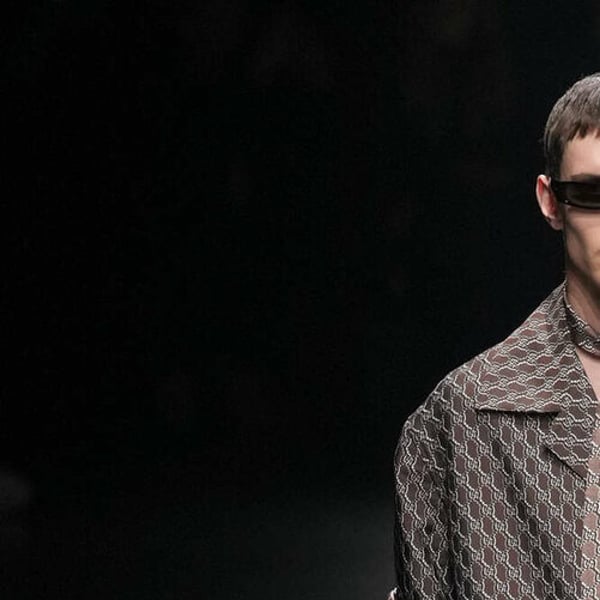
Kering’s Gucci can be revived but it won’t go viral
Last Updated on February 10, 2024 by Admin
[ad_1]
By
Bloomberg
Published
Feb 9, 2024
Investors are looking for the next turnaround story in luxury. Gucci-owner Kering SA seems like a good fit.
But with the company warning on Thursday that investing in its brands will mean a decline in operating profit this year, that longed-for revival remains some way off.
Kering’s first priority is rejuvenating Gucci. After its outlandish designs under former creative director Alessandro Michele fell out of fashion, it’s pivoting to a sleeker aesthetic under his successor Sabato de Sarno, whose styles will hit the shops shortly.
Underlining the challenge, Gucci’s fourth-quarter 2023 sales excluding exchange-rate fluctuations and mergers and acquisitions fell 4%, compared with a 9% gain at LVMH’s fashion and leather goods division. Hermes International SCA is also expected to deliver a strong performance when it reports on Friday.
Despite its traumatic last couple of years, Gucci still generated almost €10 billion of revenue last year. But it needs to attract more top-end customers, by increasing the desirability of the brand, limiting the availability of some products, and strengthening its leather-goods range.
It is building a new team, which it confirmed on Thursday would be led by Jean-Francois Palus, who was appointed Gucci chief executive officer on an interim basis last year, supported by Kering deputy CEO Francesca Bellettini. Consequently, it is spending on the supply chain, advertising and events and updating the brand’s stores.
Deputy Kering CEO Jean-Marc Duplaix said the vision for Gucci needed to be implemented for the long term, and not in a “stop and go” manner. Consequently, with de Sarno’s collection only arriving in stores this month, gradually ramping up until June, and interestingly limited to just a few wholesale partners, Gucci’s retail sales growth should be moderate this year, particularly in the first half. Operating profit would decline by at least a mid-single digit percentage, Duplaix said.
Kering said it had seen a good reception to de Sarno’s products, and was winning over more wealthy shoppers.
But, as we have learned from Burberry Group Plc’s recent profit warning, it is extremely difficult to reposition a brand and take it upmarket, in a luxury environment that is shifting from the roaring sales of the past three years to something more pedestrian.
While luxury shoppers do crave newness – promising for Gucci if it can get it right – they also tend to gravitate toward the most desired names, rather than take a risk on a second-tier label. And LVMH is making sure its houses, led by Louis Vuitton and Dior, but also including Loewe and Celine, which compete directly with Gucci, remain at the front of consumers’ minds.
Kering wants to maintain Gucci’s duality of heritage and fashion flair. But there is a question mark over whether de Sarno’s designs are distinctive enough. Analysts at Bernstein have highlighted similarities with competitors such as Tom Ford and Prada SpA’s flagship brand and sister label Miu Miu.
While Michele’s aesthetic may not have been to everyone’s taste, its arrival in 2015 changed the course of fashion, shattering the prevailing minimalism and ushering in a more opulent era. It’s still early days, but de Sarno doesn’t seem to be having the same impact.
Kering’s to-do list is not confined to Gucci. It is also trying to revitalize Balenciaga after an advertising scandal in late 2022. And it is taking steps to make its other houses, including Bottega Veneta and Yves Saint Laurent, more exclusive, cutting back on the number of third-party stores that carry them, taking its toll on their performance in 2023.
And let’s not forget Kering is also integrating Creed, the high-end perfume business it acquired last year, with the aim of using it as a platform to launch premium fragrances for its brands and then build a broader beauty offering. Oh, and there’s that 30% stake in Valentino.
Kering shook up its management team last year, but even so, tackling such a daunting range of tasks in a less than ideal luxury environment is a stretch. With so much riding on Gucci’s potential recovery, there can be no room for slip ups.
Even with the increase on Thursday, Kering’s shares have fallen about 28% over the past year, underperforming its big luxury rivals.
They trade on a forward price to earnings ratio of about 15 times, a discount to the 20 times for Cie Financiere Richemont SA and LVMH’s 24 times.
Thursday’s stock gain shows that investors don’t want to miss out. After all, Gucci has come back from the brink twice before, first under Tom Ford, and then Michele, and Kering is the master of combining creative talent, with a sharp eye for what will sell in stores, backed by canny marketing. Meanwhile, beauty could provide another earnings stream, less subject to the ups and downs of the fashion cycle.
If Kering can narrow the valuation gap to rivals, then shareholders’ faith will be justified. But its turnaround looks more like a trend that takes time to catch on, rather than a viral fashion hit.
[ad_2]
Source link







